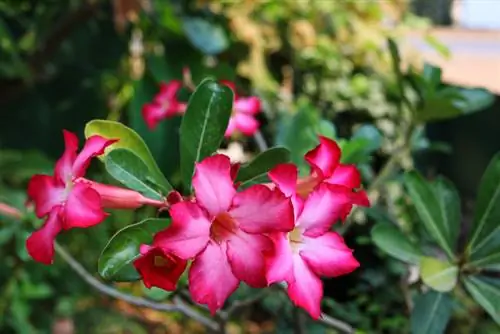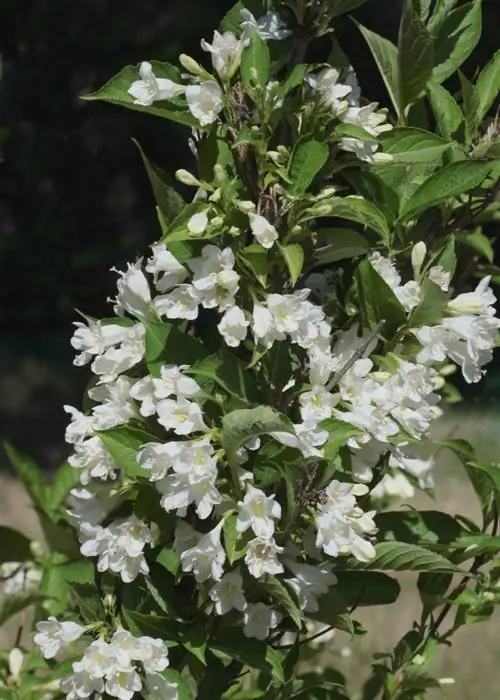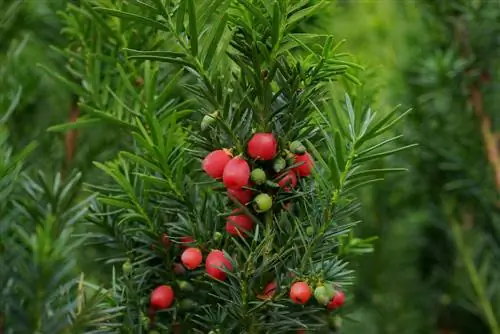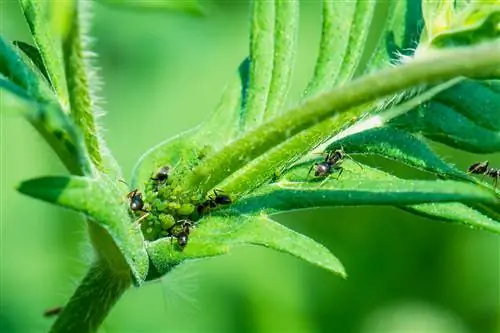- Author admin [email protected].
- Public 2023-12-16 16:46.
- Last modified 2025-01-23 11:20.
Oleander (Nerium oleander) is a popular ornamental plant that brings a Mediterranean flair to the garden or to the balcony and terrace with its lush growth and wonderful blossoms. However, the shrub from the dog's milk family is, firstly, highly poisonous and, secondly, not necessarily easy to care for and keep. For this reason, in some cases it makes sense to look for a similar plant.
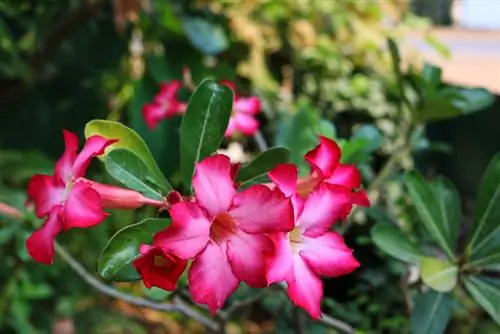
Which plants are similar to oleander?
Similar plants to oleander are the tropical oleander (Thevetia peruviana), plumeria, the desert rose (Adenium obesum) and the Christ thorn (Euphorbia milii). Non-toxic alternatives include weigela and camellia. All of these plants have attractive flowers and similar growth habits.
Aparte Beauties: Tropical Oleander and Plumeria
Closely related to the Mediterranean oleander is its tropical cousin, the tropical oleander (Thevetia peruviana), also known as the bell tree. This ornamental shrub, which comes from Central and South America, can grow up to five meters high and looks very similar to the European oleander - however, the tropical plant has bright yellow flowers and the leaves are lighter and narrower. In contrast to the oleander, the bell tree can also overwinter in the living room at around 15 °C and warmer; in summer the plant is best placed on the balcony. Also very similar to oleander, but with interesting multi-colored flowers, are the plumeria, also known as temple trees or frangipani. These also come from the subtropical and tropical regions of Central America and are also widespread in Polynesia.
Closely related: desert rose and Christ thorn
Other plants from the spurge or dog's milk family are also very closely related to oleander. These include, for example, the very interesting desert rose (Adenium obesum), which stands out due to its extraordinarily thick trunk and magical flowers. Although desert roses are also poisonous, they are much easier to care for than oleanders due to the fact that they are succulents. The poisonous spurge plant Christ thorn (Euphorbia milii) is also succulent, i.e. H. It stores water and can therefore survive for some time without regular watering.
Similar but not poisonous: weigela and camellia
If, on the other hand, you are looking for non-toxic alternatives for oleander, then take a look at weigelias and camellias. These beautiful flowering shrubs are in no way inferior to the oleander, but can be safely cultivated in a household with pets and / or small children.
Tip
The bougainvillea climbing shrub is not necessarily similar to oleander, but is still a wonderful Mediterranean plant. Its numerous flowers make it ideal for balconies or trellises.

